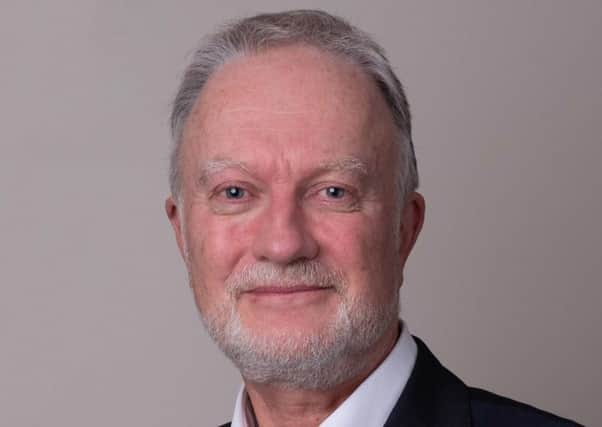Neil Armstrong called it on information overload – John Sturrock QC


In the tributes to Neil Armstrong in Scotland we often hear of his visit to this country in March 1972 to receive the freedom of the town of Langholm, the traditional seat of Clan Armstrong, making it Armstrong’s ancestral home town.
Less well known is that, during his visit, he also delivered the Mountbatten Lecture at the University of Edinburgh. Apparently, several overflow lecture theatres with closed-circuit television were needed in the Appleton Tower to cope with the audience of more than 1000 which attended.
Advertisement
Hide AdAdvertisement
Hide AdThe lecture, entitled Change in the Space Age, was remarkably prescient, tracing the history of man’s adventures and exploration of the planet and beyond, and anticipating the age of the internet. His theme was the importance, to the collective future of the world, of communication and the transfer of information.
In his lecture, Armstrong observed that, in the past, the flow of ideas was limited to the speed of the traveller, as in the journeys of Marco Polo and Columbus. Then, in the 19th century, things changed with the invention of the semaphore, the telegraph and the radio.
“Man’s world would never be the same again,” he said. Information could be transferred over vast distances at the speed of thinking. Then computers were developed which could transfer and process information at a speed faster than human thought. Satellite technology enhanced this capacity. Ultimately, for Armstrong, this had led to the remarkable exchanges on his own journey: “Hello, Eagle, this is Houston…”
Looking ahead in 1972, Armstrong anticipated forthcoming innovations – for example, “20 channels of television”!
“One need not cloak oneself in the mantle of the seer,” he said, “to predict that we will soon have the ability to transfer any amount of information from any point to any other point at any time.” He charted the changes in military command from the battlefield itself to war rooms in Ministry catacombs, distancing the commanders from the field. He observed, referring to the American involvement in South East Asia in 1972, “that remote command may already be a reality.” Fifty years later, of course, we have seen unmanned drones become primary weapons of war.
While he acknowledged that it makes the utmost good sense to make decisions at locations where there is most information, Armstrong referred to his own experience of navigating in the remote Sea of Tranquility when, with seconds of fuel remaining, he had to take manual control of, and responsibility for, the lunar landing craft in order to avoid a disastrous descent onto a boulder field. Can “icy logic in another part of the world….replace the experience and intuition of the war horse at the scene of the action?” he asked. In an increasingly AI-dominated world, this question remains singularly pertinent.
In any event, as with direct reporting to the general public from war zones on television, Armstrong reflected that there is a finite limit to human ability to absorb information.
Information overload can lead to a breaking point where we cannot take in any of the facts being presented. He predicted (in 1972) that “tomorrow will bring an ever-increasing bombardment of distilled thoughts, interpretations and visual scenes.
Advertisement
Hide AdAdvertisement
Hide Ad“Complete libraries of books, films, and tapes may become available to the home receiver on request. Satellite service will replace the postal service in many business transactions.” Could Armstrong have foreseen the explosion created by the internet, email, Twitter, You Tube and so on…? Would he have cautioned us about the immense amount of information we now try to process each day?
Armstrong concluded his lecture by observing that a great deal remains to be done in the understanding, interpretation, and presentation of information. If that was true in 1972, it is even more true for us now. “The challenge,” he said, “is not merely the accumulation of knowledge; knowledge is not wisdom. Wisdom requires understanding and the key to understanding is communication. Communication is the common denominator necessary to reason, to logic, to explanation, to interpretation. It behooves us all to learn to know and use it well. Our future depends on it.”
John Sturrock QC is founder and senior mediator of Core Solutions. www.core-solutions.com